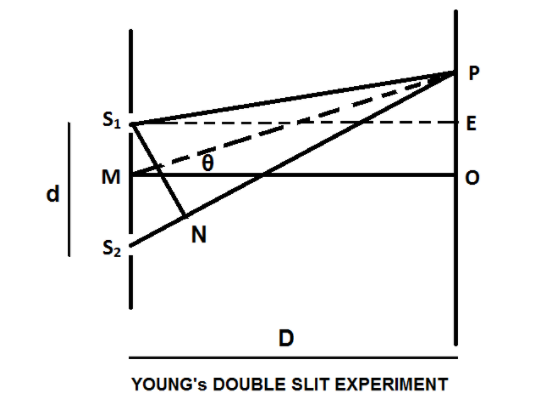Question
Question: (a) What are coherent sources of light? State two conditions for two light sources to be coherent. ...
(a) What are coherent sources of light? State two conditions for two light sources to be coherent.
(b) Derive a mathematical expression for the width of the interference fringes obtained in Young’s double slit experiment with the help of a suitable diagram.
(c) If s is the size of the source and b its distance from the plane of the two slits, what should be the criterion for the interference fringes to be seen?
Solution
Try to visualize the diagram and use different approximations to solve the question. General geometry can be used. The observations of Young’s double-slit experiment will give a perspective about the occurrence of interference. Coherency is the key to implement the experiment successfully.
Complete step by step answer:
(a) When two light sources produce waves having the same frequency and have a constant phase difference with time, they are called to be coherent. The two conditions for two light sources to be coherent are as follows:
-The coherent sources of light must have originated from a single source and must be monochromatic (that is they have a single wavelength) in nature.
-The path difference between the light waves from the two sources must be small.
(b) Let, a monochromatic source of light with wavelength λ is used to illuminate a narrow slit, S therefore producing two coherent sources of light through the two slits S1 andS2.

Now, the light waves from the slits S1 andS2 superimpose with each other and reach point P as shown in the figure and have a path difference ofS2P−S1P.
Let d= the separation between the slits, D= the distance between the screen and the slits, x= the distance between the centre of the screen to point P and θ= the angle between MP and MO. Now, draw a perpendicular,S1N on line S2P such that distances PS1 and PN are equal. Therefore, the path difference isS2N. Let, the point P be at a distance x from O. Therefore,
PE=x−2d and PF=x+2d .
Consider the right-angled triangles in the figure, we get:
⇒(S2P)2−(S1P)2=[D2+(x+2d)2]−[D2+(x−2d)2]
Simplify the equation:
⇒(S2P)2−(S1P)2=2xd
⇒(S2P+S1P)(S2P−S1P)=2xd
⇒S2P−S1P=S2P+S1P2xd
Approximate that,
⇒S2P≅S1P≅D
So, Path difference =S2P−S1P=Dxd
The condition for bright fringe at point P on the screen is:
⇒S2P−S1P=mλ
⇒Dxd=mλ
The condition for dark fringe at point P on the screen is:
⇒S2P−S1P=(2m+1)2λ
⇒Dxd=(2m+1)2λ
Where m is the order of the fringe and λ is the wavelength.
In order to find the fringe width, β subtract the distance of the two consecutive bright or dark fringes.The fringe of mth order will be seen at:
xm=dmλD
The fringe of (m+1)th order will be seen at:
xm+1=d(m+1)λD
So, the fringe width,β is given by:
⇒β=xm+1−xm
∴β=dλD
(c) If s is the size of the source and b its distance from the plane of the two slits, then the criterion for the interference fringes to occur is:
bs<dλ
Where d= the separation between the slits and λ= wavelength of the monochromatic light.Also, the size of the source and the distance between the slits should be small.
Note: The fringe width for both the bright and dark fringes will be the same. This is because air is present between the slits and the screen and thus acting as a parallel film. Therefore, the light will not deviate from its original path and produce fringes of equal widths. If a Plano-convex lens is used to produce interference then circular fringes will occur as the air film will be of variable thickness.
